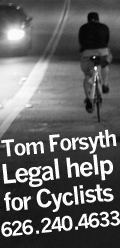It's not Arthritis

Thread started by
Jazzy Phat Nastee at 12.22.08 - 6:32 pm
<"http://upload.wikimedia.org/wikipedia/commons/thumb/7/70/Posterior_Hip_Muscles_3.PNG/190px-Posterior_Hip_Muscles_3.PNG">
Iliotibial band syndrome (ITBS or ITBFS, for iliotibial band friction syndrome[1]) is a common injury to the thigh, generally associated with running, cycling, hiking or weight-lifting (especially squats).
Definition
IBS is one of the leading causes of lateral knee pain in runners. The iliotibial tract is a superficial thickening of tissue on the outside of the thigh, extending from the outside of the pelvis, over the hip and knee, and inserting just below the knee. The band is crucial to stabilizing the knee during running, moving from behind the femur to the front while walking. The continual rubbing of the band over the lateral femoral epicondyle, combined with the repeated flexion and extension of the knee during running may cause the area to become inflamed.
Symptoms
IBS symptoms range from a stinging sensation just above the knee joint (on the outside of the knee or along the entire length of the iliotibial band) to swelling or thickening of the tissue at the point where the band moves over the femur. The pain may not occur immediately during activity, but may intensify over time, especially as the foot strikes the ground. Pain might persist after activity. Pain may also be present below the knee, where the ITB actually attaches to the tibia.
ITBS can also occur where the IT band connects to the hip, though this is less likely as a sports injury. It commonly occurs during pregnancy, as the connective tissues loosen and the woman gains weight -- each process adding more pressure. ITBS at the hip also commonly affects the elderly. ITBS at the hip is studied less; few treatments are generally known.
[edit]Sports activities to avoid while symptomatic
Running
Stair climbing
Deadlifts or squats
Court sports, such as tennis, basketball, or similar
Martial arts, such as karate (especially where being bare foot emphasises any symptoms being caused by leg/foot abnormalities)
Cycling
Bowling
[edit]Causes
IBS can result from one or more of the following training habits, anatomical abnormalities, or muscular imbalances:
Training habits:
Running on a banked surface (such as the shoulder of a road or an indoor track) bends the downhill leg slightly inward and causes extreme stretching of the band against the femur
Inadequate warm-up or cool-down
Increasing distance too quickly or excessive downhill running
In cycling, having the feet "toed-in" to an excessive angle
Running up and down stairs
Hiking long distances
reply -->
-->



